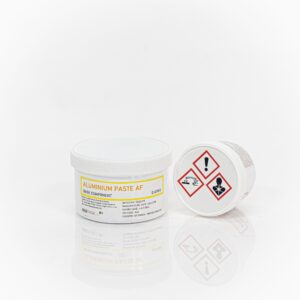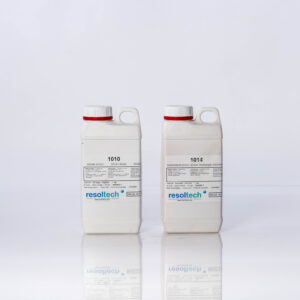Free delivery in Benelux until 10kg.
€ 128,00 – € 300,00 HTVA
A two-component, solvent-free epoxy repair paste containing hardened ceramic particles for exceptional abrasion resistance. The product can be used to repair worn or damaged metal surfaces subject to erosion and fluid corrosion.
Separators
Filters
Bow thrusters
Gouverenails
Cyclones
Pumps
Valves
Internal pipe surface
Heat exchangers
Condensers
Processing containers
1. All oil and grease must be removed from the surface using a suitable cleaner such as MEK.
2. All surfaces must be blast cleaned to ISO 8501/4 SA2.5 (SSPC SP10/ NACE 2) with a minimum profile of 75 microns (3mil) using an angular abrasive.
of 75 microns (3mil) using an angular abrasive.
3. Once stripped, the surface must be degreased and cleaned with MEK or a similar product.
4. All surfaces must be coated before corrosion or oxidation occurs.
NOTE: for salt-contaminated surfaces, the substrate must be pressure-washed with clean water and checked for salt contamination.
Please refer to the surface preparation and pre-application guide for further information.
Before mixing, please check the following points
1. The base component is at a temperature of 15-25°C (60-77F°).
2. Ambient and surface temperature above 5°C (41F°).
Once these two checks have been carried out, proceed with mixing the product.
If you are mixing part of a unit, please follow the instructions below:
1. Using the spatula supplied, place 3 equal measures of the base unit on the mixing table supplied.
2. Clean spatula thoroughly.
3. Then take 1 equal measure of the activator unit and place it next to the base measures.
4. Mix the 2 components until you obtain a streak-free mixture (medium grey) on the mixing table.
5. Make sure there is no unmixed material on the spatula or mixing table.
If you are mixing a complete unit of material (1kg/3kg), follow the instructions below:
1. Distribute as much of the base and activator units as possible on the mixing table provided.
2. Mix the 2 components until you obtain a streak-free mixture (medium grey) on the mixing table.
3. Make sure there is no unmixed material on the spatula or mixing table.
Once mixing has begun, the material must be used within 30 minutes at 20°C (68F°).
1. Using a spatula or application tool, apply the material to the prepared surface.
2. Ensure that the product is pressed into any holes, scars or cracks.
3. Once the repair is complete, smooth out any imperfections with a gloved hand.
At 20°C (68F°), applied materials must be allowed to cure for the times indicated below before being subjected to the conditions indicated.
conditions indicated. These times will be extended at lower temperatures and reduced at higher temperatures:
Operating time 30mins
Minimum recoat time 2 hours
Maximum recoat time 6 hours
Full cure 3 days
Minimum – the applied material can be covered as soon as it is dry to the touch.
Maximum – covering time must not exceed 6 hours.
Once the maximum recoat time has been exceeded, allow the material to harden before abrading or sandblasting to remove surface contamination.
to remove surface contamination.
Mixed material – Medium grey
Base component – Dark grey
Activator component – Light grey
5 years if unopened and stored under normal dry conditions (15-30°C/ 60-86°F).





RUE J. VAN HOVE, 35 1950 KRAAINEM
Mo-Fr 8:30 - 12:00 / 13:00 - 17:00